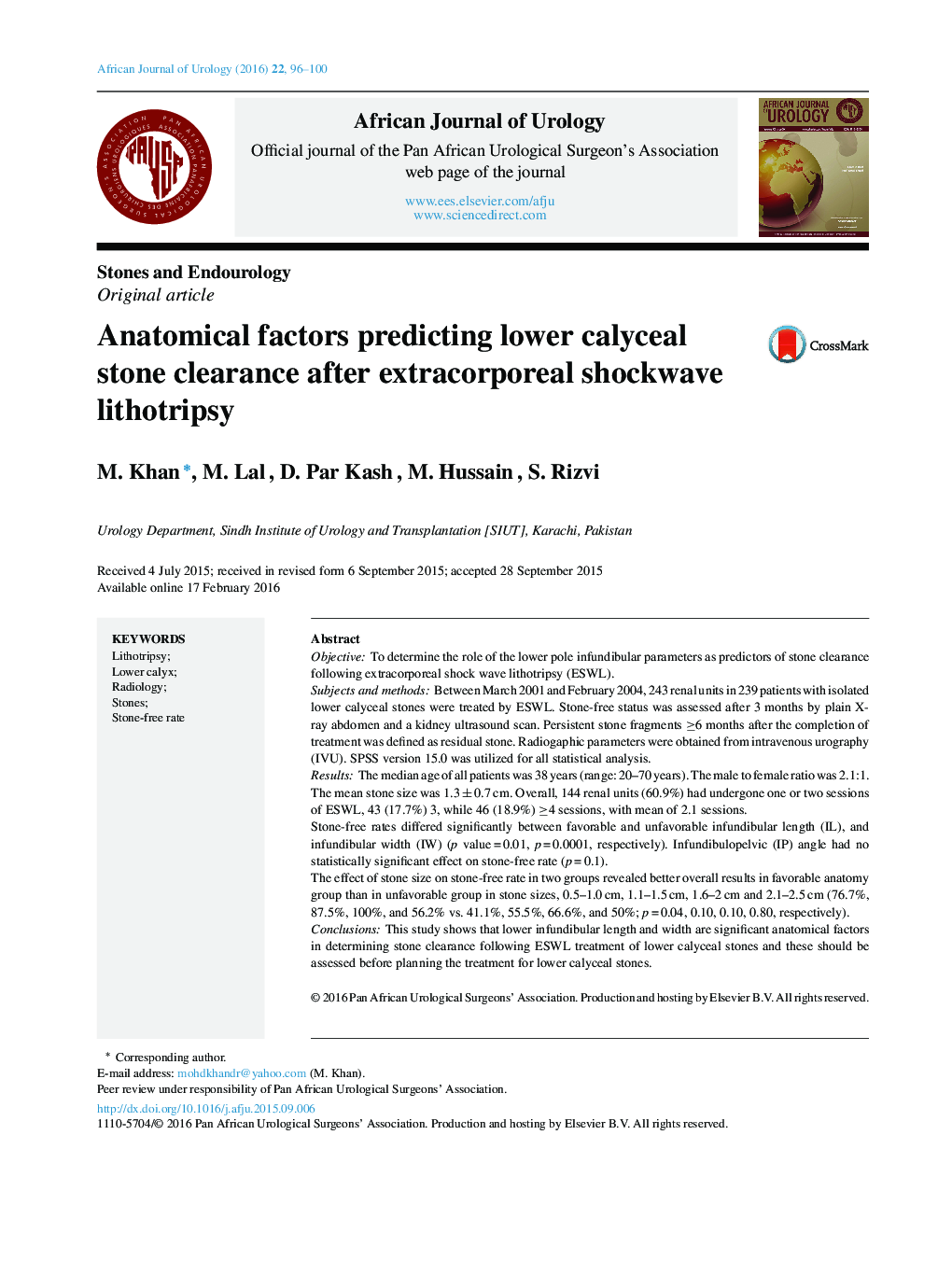| Article ID | Journal | Published Year | Pages | File Type |
|---|---|---|---|---|
| 4267515 | African Journal of Urology | 2016 | 5 Pages |
ObjectiveTo determine the role of the lower pole infundibular parameters as predictors of stone clearance following extracorporeal shock wave lithotripsy (ESWL).Subjects and methodsBetween March 2001 and February 2004, 243 renal units in 239 patients with isolated lower calyceal stones were treated by ESWL. Stone-free status was assessed after 3 months by plain X-ray abdomen and a kidney ultrasound scan. Persistent stone fragments ≥6 months after the completion of treatment was defined as residual stone. Radiogaphic parameters were obtained from intravenous urography (IVU). SPSS version 15.0 was utilized for all statistical analysis.ResultsThe median age of all patients was 38 years (range: 20–70 years). The male to female ratio was 2.1:1.The mean stone size was 1.3 ± 0.7 cm. Overall, 144 renal units (60.9%) had undergone one or two sessions of ESWL, 43 (17.7%) 3, while 46 (18.9%) ≥4 sessions, with mean of 2.1 sessions.Stone-free rates differed significantly between favorable and unfavorable infundibular length (IL), and infundibular width (IW) (p value = 0.01, p = 0.0001, respectively). Infundibulopelvic (IP) angle had no statistically significant effect on stone-free rate (p = 0.1).The effect of stone size on stone-free rate in two groups revealed better overall results in favorable anatomy group than in unfavorable group in stone sizes, 0.5–1.0 cm, 1.1–1.5 cm, 1.6–2 cm and 2.1–2.5 cm (76.7%, 87.5%, 100%, and 56.2% vs. 41.1%, 55.5%, 66.6%, and 50%; p = 0.04, 0.10, 0.10, 0.80, respectively).ConclusionsThis study shows that lower infundibular length and width are significant anatomical factors in determining stone clearance following ESWL treatment of lower calyceal stones and these should be assessed before planning the treatment for lower calyceal stones.
